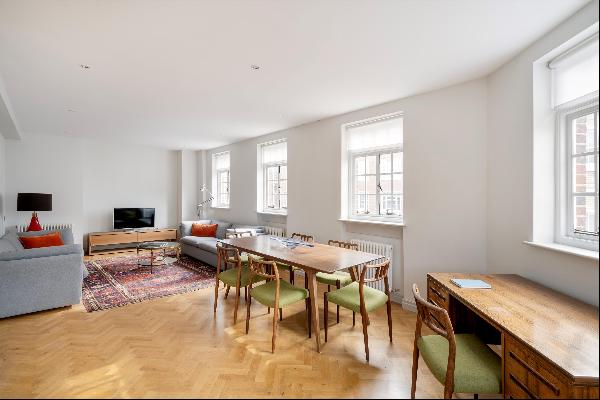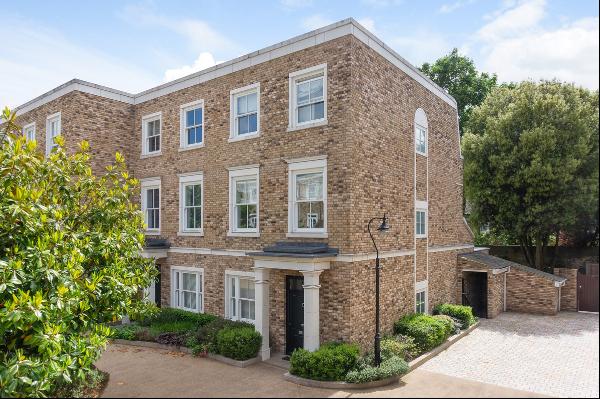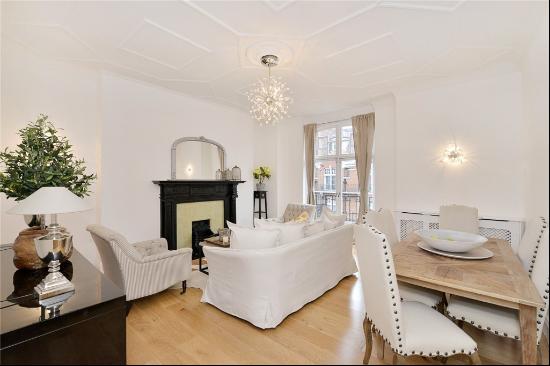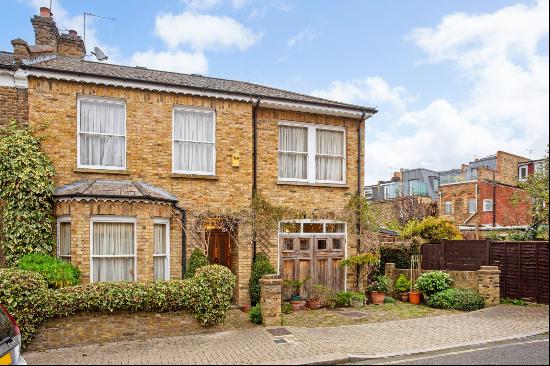
By Christian Bense
Hybrid working has become the norm for many. While a home office or study might be a separate room, it’s just as often a shared space and needs to feel part of the rest of the house. It has to balance the need for screens and technology with the everyday flow of the home and the aesthetic preferences of the owners.
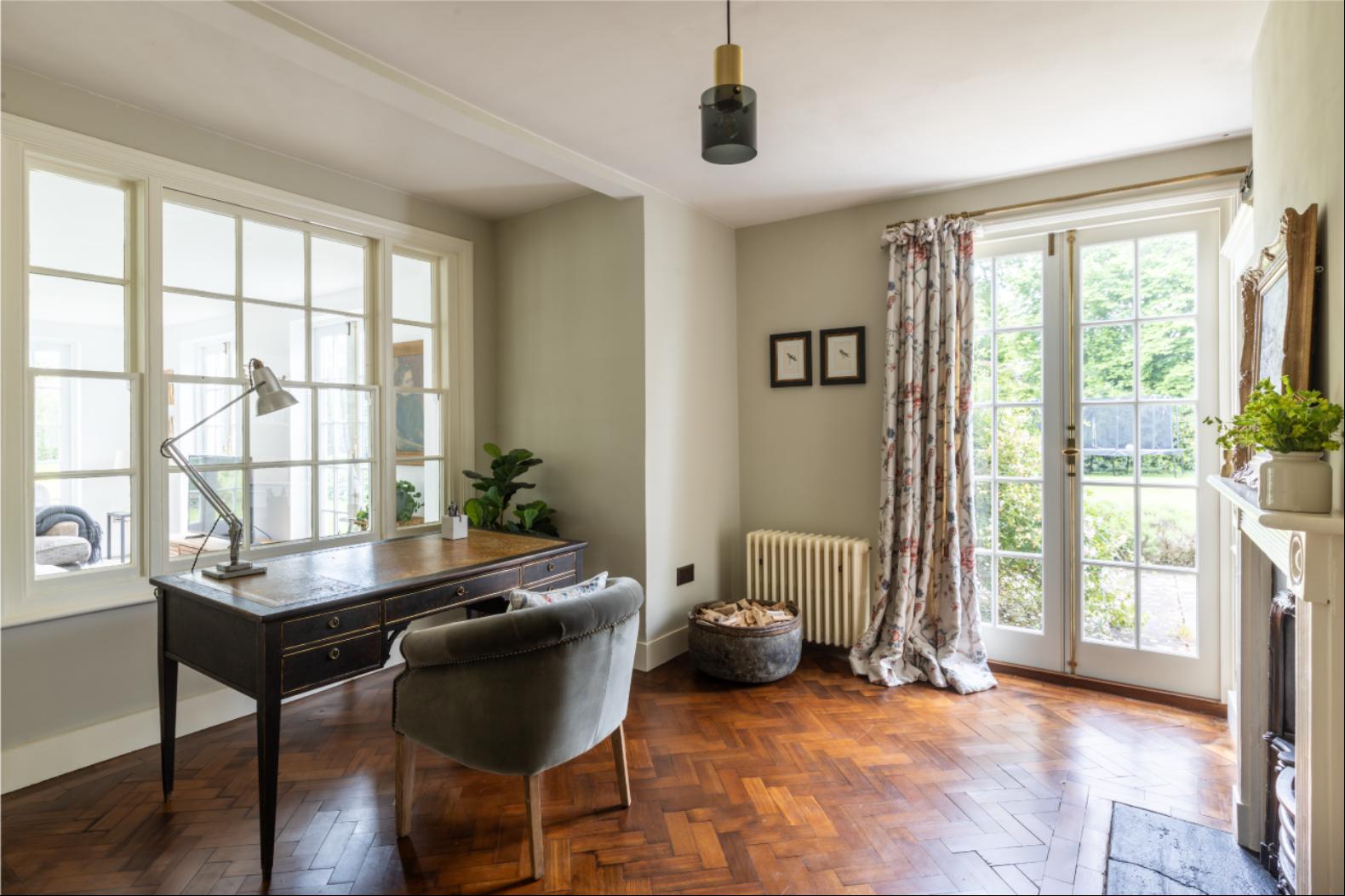
Here are my tips on how I’d approach the study at this Grade II-listed Georgian house in Kent, on the market for £2.25mn, where a parquet floor acts as the starting point for a welcoming space that has focus and flexibility.
Create some warmth
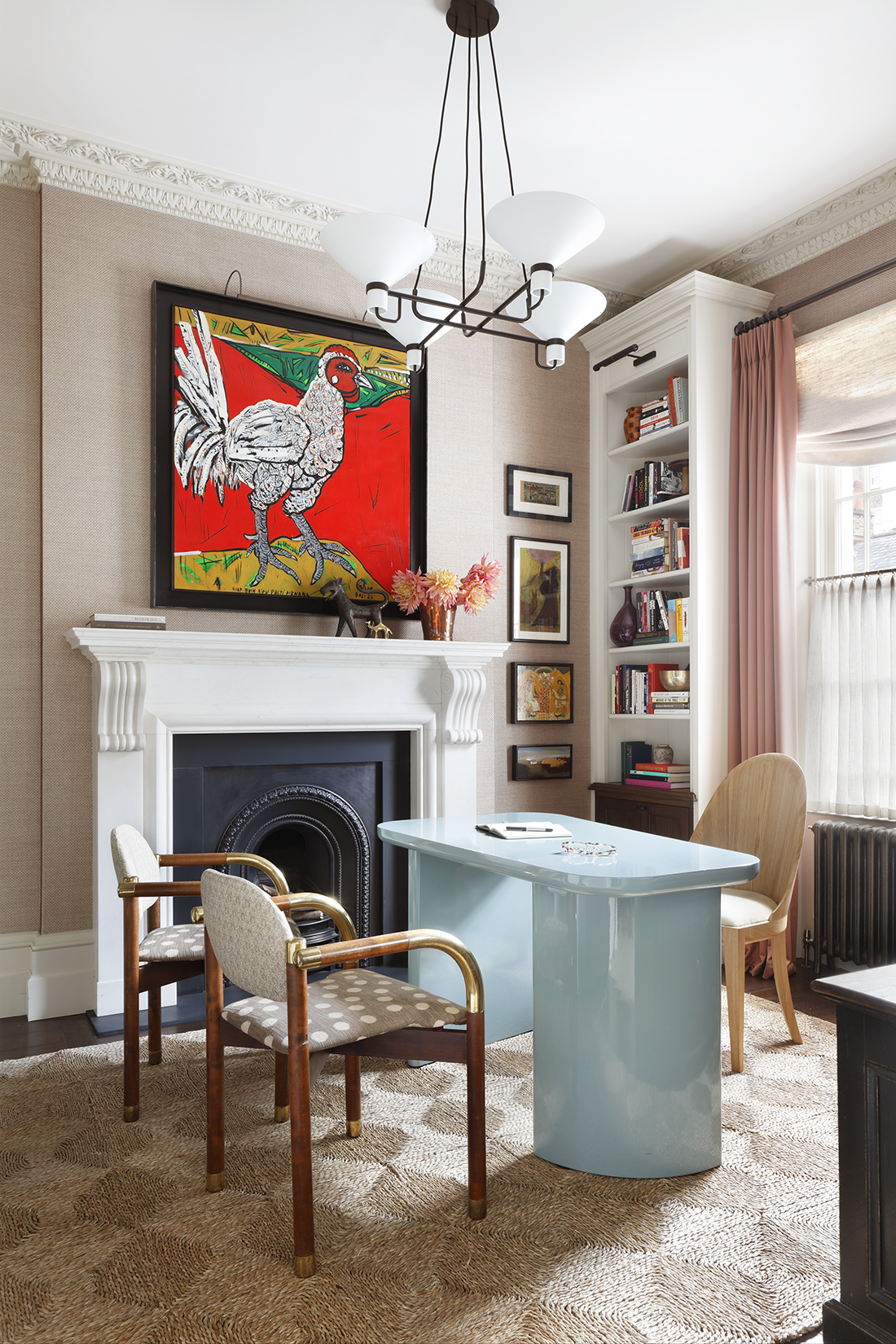
Paramount to the success of any workstation is good lighting. I think the glow of a desk lamp and a computer screen is all one really needs, but creating warmth in the room by way of textured wallpaper is a good way to balance out an otherwise well-lit space. This helps to create an ambience that feels softer, more in keeping with a home environment, and absorbs some of the flattening overhead light.
A favourite in our studio is Rombo, the paper-backed wall covering from Tatiana Tafur, made from fibrous abaca, a relative of the banana plant. One of several woven patterns, this intricate geometric diamond design has a soft lustre that is created using a cotton warp and an abaca weft. It not only provides a subtle pattern, but also texture and warmth.
Create some flow

A desk that isn’t pushed flat to the wall is best if space allows. A shaped desk provides an opportunity for you to position it well in the room, wherever it best benefits from garden views, natural light or access to sockets and switches. It also allows the room to function as more than an office when the need arises. Giving the impression that this is an occasional space provides flexibility and allows the room to be more than just an office.
This sculptural writing desk from Rose Uniacke is the perfect example of a desk that can double as an occasional table or console when needed, especially when entertaining.
A place to relax

One doesn’t solely sit upright at a desk to work, so incorporating a secondary, relaxed seating area is a must. Layers of upholstery prevent a home office from feeling too corporate, and an armchair tucked in the corner will help a space feel multi-functional, so that it doesn’t become just a desk in a room.
Sculptural, art-inspired furniture such as this statement armchair from Ferm Living provides a good companion to the shaped desk.
Don’t forget your background

Zoom is here to stay, so creating a backdrop for your home office is key. The right work of art can really help here, and incorporating a large-scale piece is a great way to add interest to a space without the clutter of a gallery wall. Leave family photos or wedding pictures for another part of the house, and opt instead for a big, bold art work, preferably without glass to prevent glare.
These large-scale abstracts from Formworks Studio come in a range of sizes.
Cut some rug

As lovely as a hardwood parquet floor may be, a home office still needs a rug. This helps soften the space and is the finishing touch a room needs in order to feel sufficiently layered and focused.
A good rug can often come with a hefty price tag, but these handmade, “cut pile” wool rugs from Nordic Knots are a great way to create different zones in a room with just the subtle hint of a pattern.
Photography: Alexander James; Knight Frank; Formworks Studios; Kristoffer Atelj/Nordic Knots

















